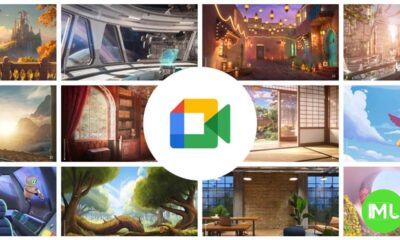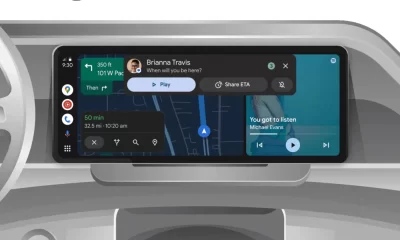Android
Google’s Next-Gen Pixel Tablet 2 and Android 15 QPR2: A major leap in tablet productivity and keyboard support

While most Android tablets are great for watching videos and browsing, only a few truly excel at productivity. The Google Pixel Tablet is known for its solid media experience, but it struggles as a work tool due to the lack of productivity features and compatible accessories. However, Google seems to be taking significant steps with the upcoming Pixel Tablet 2 and new software updates in Android 15 QPR2 to change that.
Pixel Tablet 2: Enhanced Features and Accessories
Improved Hardware with New Chip and Camera
The Pixel Tablet 2 is expected to come with notable hardware improvements. Sources indicate that the new model will feature an upgraded camera, although specific details about the enhancements are still unclear. The original Pixel Tablet had an 8MP camera on both the front and back. The Pixel Tablet 2 may include better image processing and new camera features, aiming to offer a slightly enhanced photography experience.
A significant upgrade lies in its processing power. The first-generation Pixel Tablet used the Tensor G2 chip, which is now considered outdated. For the Pixel Tablet 2, Google is likely to use either the Tensor G4 or the upcoming Tensor G5 chip. Both chips promise major performance improvements and extended software support, with up to 7 years of updates. This hardware boost will make the device much more capable of handling demanding applications and tasks, making it a strong contender in the productivity space.
First-Party Keyboard Accessory in the Works
Productivity is also getting a boost with new input accessories. The Pixel Tablet 2 is rumored to come with a keyboard cover that attaches via pogo pins on the back. This accessory, similar to those offered with tablets like the OnePlus Pad 2, aims to transform the Pixel Tablet 2 into a more capable productivity device. Previous attempts to launch keyboard and stylus accessories for the original Pixel Tablet were scrapped due to quality concerns. Now, with better hardware and software integration, Google is ready to revisit this approach.
Design Tweaks and Possible Stylus Integration
Design-wise, the Pixel Tablet 2 might not deviate much from its predecessor but could include minor adjustments like repositioned buttons and slightly thinner bezels. Early prototypes have shown that the camera and power buttons could be placed on the left side, with a revised layout for volume controls. While there is speculation about a stylus accessory, it remains unclear if Google will include one at launch. The final design and accessory details are expected to surface closer to the anticipated release in 2025.
Android 15 QPR2: New Features for Enhanced Productivity
Alongside the Pixel Tablet 2, Google is enhancing Android’s capabilities with Android 15 QPR2, focusing on improving keyboard and mouse support to bridge the gap between Android tablets and traditional PCs.
New Customization Options for Physical Keyboards
Google is introducing several features to make typing on Android devices more versatile:
- Bounce Keys Threshold: This feature allows users to set a delay to ignore rapid, repeated key presses. It’s designed for users who may accidentally press the same key multiple times due to motor impairments. The customizable delay can range from 0.1 to 5 seconds.
- Repeat Keys: With this feature, users can hold down a key to repeat its character until released. This option can be turned off to prevent unintentional repeated characters, catering to those who may struggle with quick key release.
Enhanced Mouse Control Features
Android 15 QPR2 also brings new mouse customization options:
- Mouse Reverse Scrolling: Users can change the direction of the mouse scroll. When enabled, scrolling up will move the page down and vice versa, catering to users’ preferences similar to desktop environments.
- Swap Left and Right Mouse Buttons: This option allows users to swap the functions of the left and right mouse buttons. It is particularly useful for left-handed users or those preferring an alternative setup.
Improved User Experience and Accessibility
Google’s focus on improving user interaction extends beyond these features. Previous updates have introduced desktop windowing, touchpad gestures, enhanced keyboard shortcuts, and firmware updates for keyboards and styluses. These refinements aim to make Android a more robust platform for productivity tasks, positioning it as a viable alternative to traditional operating systems like Windows and macOS.
Expanding Android’s PC-Like Capabilities
Google’s ongoing improvements suggest a clear push towards making Android more suitable for serious work. With the upcoming Pixel Tablet 2 potentially launching with Android 15 QPR2 or even Android 16, we can expect an experience more aligned with a desktop-like interface. The enhancements in keyboard and mouse support reflect Google’s commitment to transforming Android tablets into effective productivity tools, expanding their use cases beyond mere media consumption.
What to Expect Next
There are still many details about the Pixel Tablet 2 that remain under wraps, such as pricing, the exact release date, and whether accessories like a stylus will be included. However, the combination of powerful hardware upgrades, new first-party accessories, and improved software support sets the stage for the Pixel Tablet 2 to be a strong contender in the productivity tablet market.
In summary, with the expected launch of the Pixel Tablet 2 and the features of Android 15 QPR2, Google is making strides in enhancing its tablet lineup’s productivity. By bridging the gap between Android tablets and traditional PCs, Google aims to cater to users who want a versatile device that handles both entertainment and work seamlessly. This evolution could potentially attract a broader audience, making Android tablets a compelling choice for both casual users and professionals.
The upcoming updates and device releases signal a promising future for Android tablets, making them more appealing for users seeking a mix of entertainment and productivity. As Google refines its tablet features and hardware, it could redefine the standards for what Android tablets can achieve in the competitive market.
Android
Easy ways to change Android Auto’s look with light and dark themes

Android Auto is a helpful tool that lets you use your phone’s apps safely while driving. It connects your phone to your car’s screen, making it easier to use maps, music, and calls. One of the features many people like is the ability to change how Android Auto looks by switching between light and dark themes.
How to switch between light and dark themes
Android Auto offers two main themes: light and dark. The light theme uses brighter colors, which can make the screen easier to see during the day. The dark theme uses darker colors, which can be more comfortable for your eyes at night or in low light.
To change the theme, follow these steps:
- Open the Android Auto app on your phone.
- Go to the settings menu.
- Find the “Theme” option.
- Choose between “Light,” “Dark,” or “Set by car” (this lets your car decide the theme based on the time of day or your car’s settings).
Why themes matter
Using the right theme can make driving safer and more comfortable. The light theme is good for bright days, while the dark theme helps reduce glare at night. Having these options means you can pick what works best for you, making Android Auto easier to use in any condition.
In short, Android Auto’s theme options are simple to use and help you drive more safely by making the screen easy to see, no matter the time of day.
Android
Google’s New Updates: Gemini 2.5 Pro, Android 16 features, and Messages change

Google has just rolled out some exciting updates across its services and apps. Here’s a simple breakdown of what’s new and what it means for you.
Gemini 2.5 Pro is here
Google has launched Gemini 2.5 Pro, the latest version of its AI model. This upgrade brings smarter and faster responses, making it easier for users to get helpful answers. Gemini 2.5 Pro is now available in Google’s AI Studio and Vertex AI, so developers can build even better tools and apps using this technology.
Android 16 brings more customization
Android 16 is adding new ways to personalize your phone. One of the standout features is the ability to hide the clock on your lock screen, giving you a cleaner look if you want it. This is part of Google’s push to let users make their phones feel more unique. There’s also a new animation for the power button, making the experience smoother and more modern when you turn your phone on or off.
Google Messages removes the unsubscribe button
If you use Google Messages, you might notice that the “Unsubscribe” button is gone from some business messages. Google has removed this feature, so users now have to find other ways to stop unwanted texts. This change might make it a bit harder to manage spam, but Google hasn’t said why the option was removed.
What does this mean for you
These updates show that Google is focused on making its products smarter and more personal. Whether you’re using AI tools, customizing your phone, or managing your messages, you’ll see some changes that aim to improve your experience.
Android
Here’s what’s new with Google Keep and Android Automotive apps

Google Keep is getting a fresh look with the new Material You design, making it more colorful and easier to use on Wear OS smartwatches. The update brings bigger buttons and clearer text, so you can quickly jot down notes or check your lists right from your wrist. This makes Google Keep more handy when you’re on the go and don’t want to pull out your phone.
On another front, Android Automotive is improving how apps show information while you drive. Instead of opening full apps, you’ll see simple cards on your car’s screen that give you important details at a glance.
These cards help keep your focus on the road by showing things like music controls, navigation updates, or reminders without distractions. This new card system is designed to work smoothly with apps like media players and navigation tools, making your driving experience safer and more convenient.
Together, these updates show Google’s effort to make its apps smarter and easier to use in everyday life, whether you’re walking around with your smartwatch or driving your car. The focus is on clear, simple designs that help you get things done quickly without hassle.
In short, Google Keep’s new look on Wear OS and the smart cards in Android Automotive are small but useful changes that make tech fit better into your daily routine.
-

 Apps1 year ago
Apps1 year agoGboard Proofread feature will support selected text
-

 News1 year ago
News1 year agoSamsung USA crafting One UI 6.1.1
-

 Apps12 months ago
Apps12 months agoGoogle Contacts app testing new Besties Widget
-

 AI12 months ago
AI12 months agoGoogle Pixel 9 Pro may come with a complimentary one-year Gemini Advanced subscription
-

 News1 year ago
News1 year agoBreaking: Samsung Galaxy S22 may get Galaxy AI features
-

 Apps12 months ago
Apps12 months agoGoogle working on a new video editing feature for its Photo app
-

 Apps12 months ago
Apps12 months agoGoogle Maps lets you report traffic jams and accidents on Apple CarPlay, but not on Android Auto
-

 Apps12 months ago
Apps12 months agoGoogle Messages app will transform MMS chats into RCS










